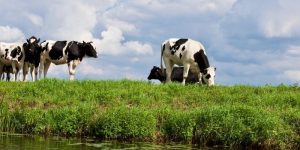Will US trade pressure reshape Australian Wagyu genetics exports?
The hidden risk for live breeding stock
The Australian Wagyu breeding industry has built a global reputation for precision genetics, full-blood herds and export-ready live stock and semen.
Yet as trade relations between Australia and the United States tighten, including the imposition of a 10 % tariff on Australian red-meat exports by the United States in April 2025, a lesser-explored question emerges…
What does this mean for live‐cattle/breeders, embryo and semen exports (the ‘genetics’ side) rather than just beef?
While the tariff currently applies to beef, policy signals and legislative proposals suggest breeders should monitor risk in the live breeding sector.
The Status of Australian Wagyu Breeding Exports
Australia’s Wagyu sector has grown significantly from early imports and now supports both full-blood and cross-breeding programs.
According to the Australian Wagyu Association (AWA), some 220 individual Wagyu cattle were exported live from Japan for breeding genetics, predominantly into Australia and the USA. The sector has expanded and Australia now maintains a genomics database of more than 400,000 individuals, supporting both full-blood and cross-breeding programs that underpin Australia’s leadership in Wagyu genetics.
Meanwhile, Meat & Livestock Australia’s 2024 live-export summary reports that 670,791 head of cattle were shipped by sea in 2023, up 12 per cent on the previous year and marking the first annual increase since 2019. Demand was strongest from Indonesia, Vietnam, and China, with smaller but rising volumes to Israel and the Middle East.
Within that broader trade, Wagyu seed-stock and feeder cattle continue to occupy a specialist, high-value role, particularly in Japan, where Australian-bred Wagyu contribute to genetic diversity and supply consistency in the global luxury-beef market.
The US Policy Environment and Risk For Genetics Exports
In April 2025 the US announced a 10 % baseline tariff on Australian red-meat exports (beef, sheepmeat, goatmeat) which took effect 5 April 2025.
While that tariff explicitly covers meat rather than live cattle or semen/embryos, the broader legislative environment gives cause for breeders to take note.
For example, a US congressman introduced the “Protect American Beef Act” which — beyond beef — sought to include genetics (semen and embryos) of Australian Wagyu as part of the competitive disadvantage argument.
Furthermore, commentary from the industry suggests American producers perceive Australia as having an unfair advantage via genetics and exports.
Therefore, the risk is not yet manifest in statistical disruption (at least publicly), but the threat is visible. A change in classification or trade barrier for live-breeding stock could emerge as a second phase of trade action.
What this means for Australian breeders/exporters
For Australian Wagyu breeders and genetics exporters the current state may be described as ‘monitor and diversify’.
Key implications:
Diversify markets
Reliance on the US alone for live breeding stock or genetics exports would leave a business vulnerable should policy shift. Australian breeders already target Asia/Middle East and other regions which may be less politically fraught.
Emphasise premium, traceable genetics
If trade barriers emerge, the ability to argue ‘world-standard genetics, breed-verified, export-ready’ becomes a competitive edge rather than relying simply on volume.
Prepare for non-meat trade barriers
Even though the tariff currently applies to meat, the legislative rhetoric indicates that genetics may be next. Business planning should include contingencies for additional costs, bio-security checks, or trade classification changes.
Maintain live export credentials and welfare standards
Live export markets (even for breeders) are sensitive to welfare and regulatory risk. As the niche of genetics becomes more globalised, any trade barrier may also be framed around welfare or traceability issues.
No immediate crisis—but keep an eye on developments
It’s important to stress that as of now there is no documented sharp decline in Australian live breeding-Wagyu exports to the US specifically because of the tariff. The red-meat tariff does not directly cover live cattle/semen/embryos, and Australian sources say global demand remains robust.
However, because the legislative seed for genetics-tariffs is present, breeders would be wise not to assume continuity by default. Tracking indicators such as:
- new US legislative drafts targeting genetics imports
- shifts in US import data of live cattle or genetics from Australia (if published)
- changes in Australian export permits or bio-security agreements will provide early warning of any impact.
Conclusion
The Australian Wagyu breeding and genetics sector stands on solid foundations. Strong genetic databases, global demand for premium seed-stock and diversification of markets.
Yet the changing trade-policy climate between Australia and the US introduces a wrinkle. While the current tariff regime affects beef, the potential for live-breeding-stock or genetics to become a targeted category cannot be ignored.
For breeders and exporters, the smart path is to treat the US market as a major opportunity — but not as the only one, and ensure business models hedge against trade action.
Make a Trade Enquiry Today
Partner with Australia’s Livestock Exporters to source award-winning Wagyu cattle from Australia that meet the highest export standards and elevate your market offering.




